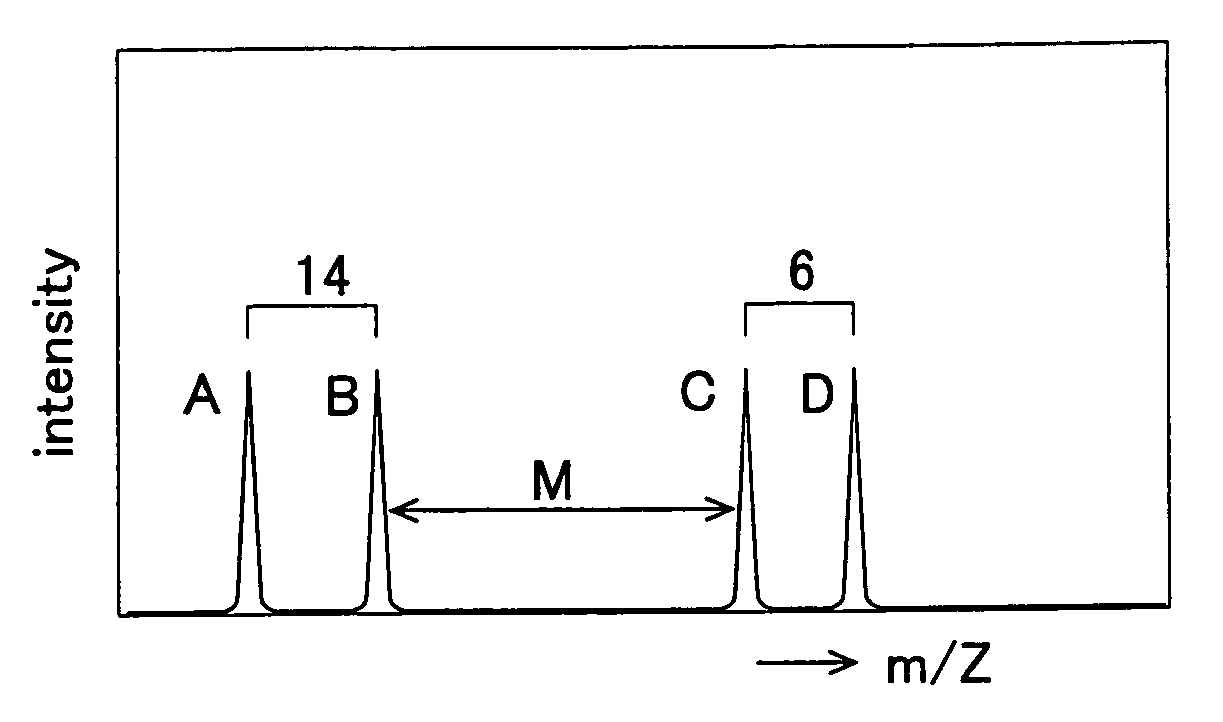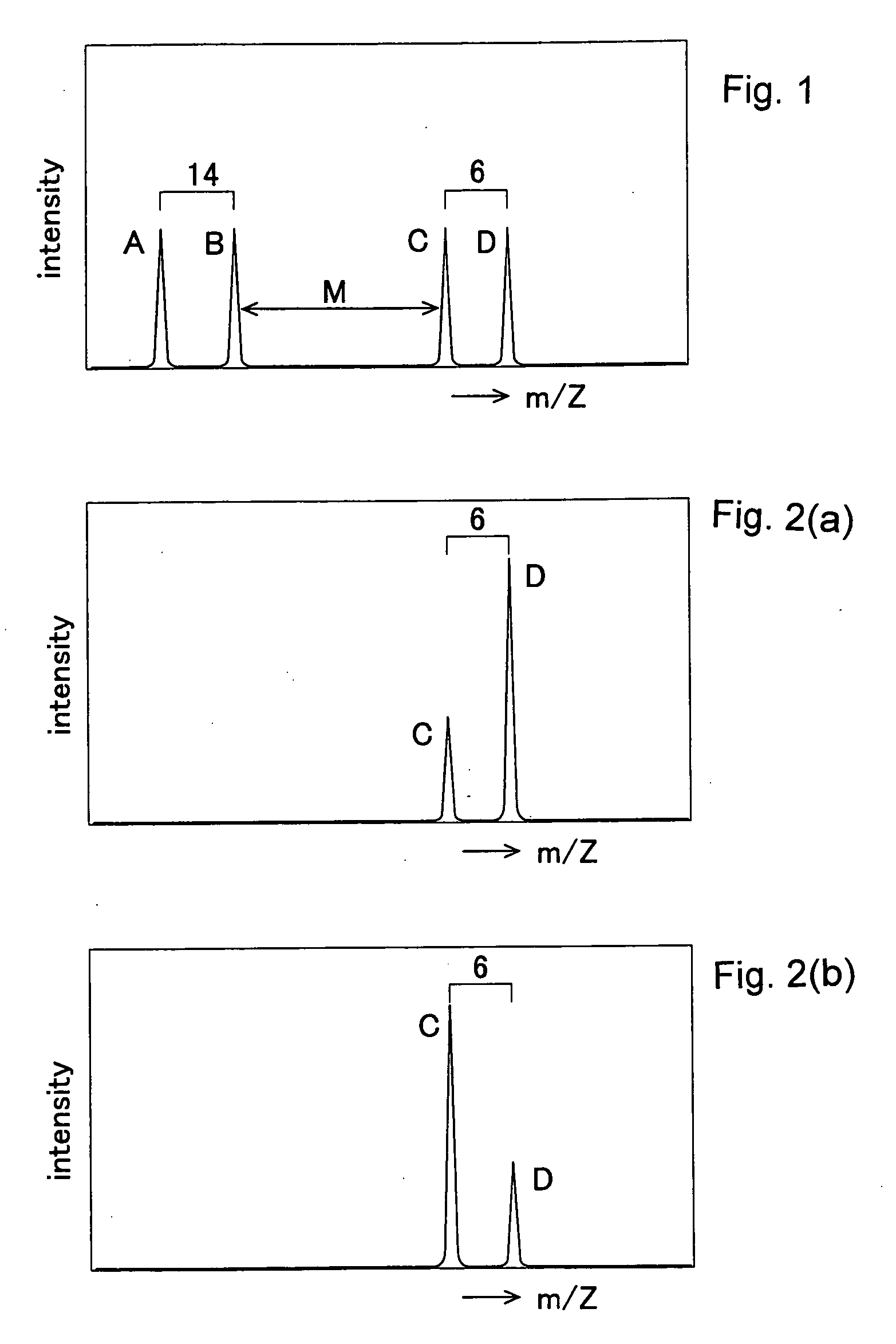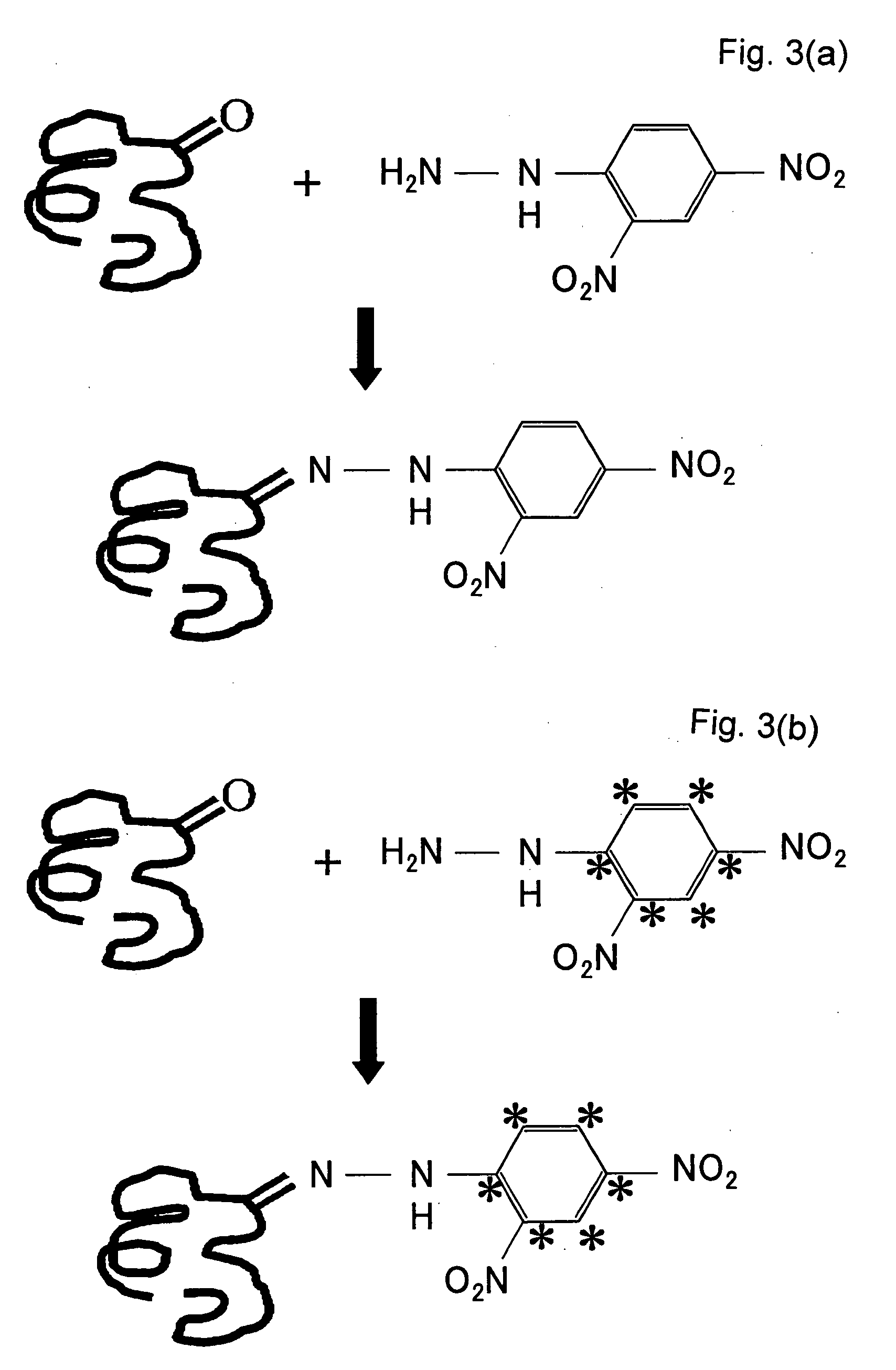Method of Quantitative Analysis of Oxidized Protein, Labeling Reagents for Quantitative Analysis of Oxidized Protein and Labeling Reagent kit for Quantitative Analysis of Oxidized Protein
a technology of oxidized protein and labeling reagents, which is applied in the field of quantitative analysis of oxidized protein, can solve the problems of difficult to achieve infallible discrimination, and achieve the effects of high sensitivity, rapid quantification, and convenient us
- Summary
- Abstract
- Description
- Claims
- Application Information
AI Technical Summary
Benefits of technology
Problems solved by technology
Method used
Image
Examples
example
[0039]A concrete example of the present invention will be described based on experimental results.
Synthesis of 13C6-DNPH
[0040]To 0.441 g (65 mmol) of benzene (13C6) having six carbon atoms substituted by stable isotopes (13C), 1 mg of Fe and 13 ml (5.29 mmol) of Br2 were added and the resultant was stirred at 55° C. for 15 min. The resultant mixture was cooled to room temperature, an aqueous 10% sodium hydroxide solution was added to the cooled mixture, and extraction was performed with diethyl ether. The resultant was washed with water and then distilled to obtain bromobenzene.
[0041]Next, 7.5 ml of sulfuric acid (H2SO4) and 5.0 ml of nitric acid were mixed and heated to 85° C. while being stirred and were then added with the bromobenzene has already been synthesized. The resultant mixture was further stirred at 85° C. and then cooled to room temperature. The resultant was then cooled with ice and extraction is performed using diethyl ether. The extracted substance was washed with w...
PUM
 Login to View More
Login to View More Abstract
Description
Claims
Application Information
 Login to View More
Login to View More - R&D
- Intellectual Property
- Life Sciences
- Materials
- Tech Scout
- Unparalleled Data Quality
- Higher Quality Content
- 60% Fewer Hallucinations
Browse by: Latest US Patents, China's latest patents, Technical Efficacy Thesaurus, Application Domain, Technology Topic, Popular Technical Reports.
© 2025 PatSnap. All rights reserved.Legal|Privacy policy|Modern Slavery Act Transparency Statement|Sitemap|About US| Contact US: help@patsnap.com



